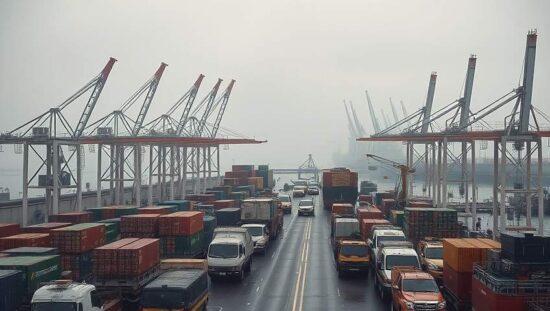Germany’s trade surplus narrowed in August 2025, signaling a potential shift in the country’s economic trajectory and raising questions about the resilience of its export-led growth model. Preliminary data released by Destatis revealed a 0.5% decline in exports and a more pronounced 1.3% fall in imports when compared to July 2025, adjusted for seasonal and calendar variations. Year-on-year, exports were down by 0.7% while imports rose by a more substantial 3.5%, highlighting a diminishing global demand and potentially altering Germany’s position as a key global trade engine.
While the current account still posts a surplus, at €17.2 billion, this represents a noticeable weakening from both July’s €16.3 billion and, crucially, the €21.9 billion surplus recorded in August 2024. The figures underscore growing concerns about the long-term implications of a slowdown in global trade and the impact of persistent geopolitical uncertainties.
The decline isn’t uniform across trading partners. Exports to the United States, a vital market for German goods, continue to falter. August 2025 saw a 2.5% decrease compared to July, resulting in the lowest export value since November 2021 at €10.9 billion – marking five consecutive months of decline. Year-on-year, exports to the US plummeted by an alarming 20.1%, raising concerns about the health of the American economy and its demand for German manufactured goods. Although exports to China saw a modest increase of 5.4% in August, the overall picture remains cautiously subdued.
The structure of German imports is also undergoing changes. While the People’s Republic of China remains the largest source of imports, the volume decreased by 4.5% from the prior month. Imports from the US, conversely, grew by 3.4%, possibly reflecting shifts in supply chains and strategic re-evaluation of procurement strategies.
Interestingly, trade with Russia has experienced notable fluctuations. Exports to the Russian Federation surged by 53.5% compared to July 2025, a figure that warrants deeper scrutiny given the ongoing political complexities and sanctions regime. While imports from Russia contracted, the rebound in exports needs to be cautiously assessed in light of potential circumvention of restrictions and strategic maneuvering.
Adjusting for seasonal and calendar variations, nominal exports for August 2025 reached €115.6 billion, with imports totalling €102.9 billion. Unadjusted for these factors, both exports and imports demonstrate a significant decline when compared to August 2024, the latter painting a particularly worrying picture with a declining trade surplus of just €12.8 billion – a stark contrast to the €18.4 billion recorded a year prior.
Analysts are now questioning whether the German economy requires a more diversified growth model, less reliant on exports and more focused on domestic demand and innovation. The persistent weakening of the trade surplus suggests that the previously lauded strength of the German export machine is facing significant headwinds and a fundamental re-evaluation of its economic strategy may be warranted.





